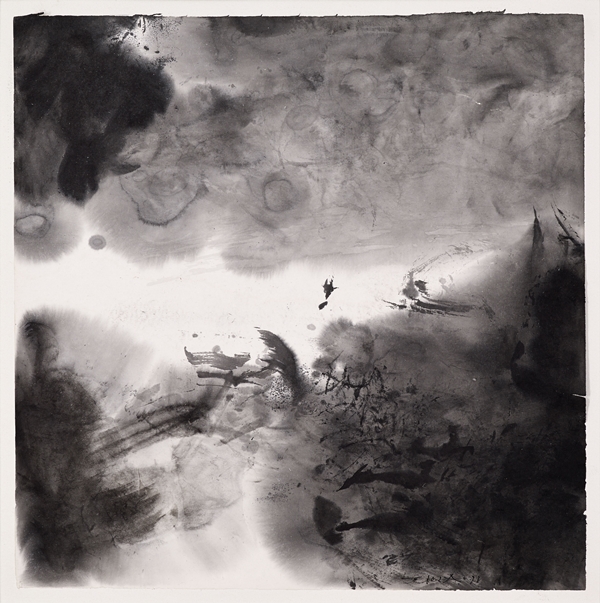
Zao Wou-ki, Untitled (1971).
Image: Courtesy of de Sarthe Gallery.
1. Zao Wou-ki: Ink and Watercolor, de Sarthe Gallery, March 13–April 11
This show de Sarthe Gallery revels in the sense of freedom and rejuvenation the late Chinese painter Zao Wou-ki experienced in the run-up to the 1970s. After dedicating decades to experimenting with oils, he re-embraced ink during this deeply tumultuous period of his life. On display will be a thoughtful selection of 14 ink paintings and six watercolors dating from as early as 1950 up until 2000. Works range from an airy celestial blue watercolor to darker pieces with tempestuous brushstrokes soaring across expanses of bare xuan paper.
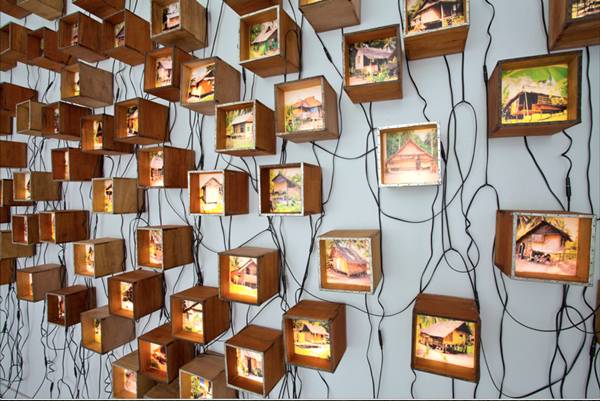
Diokno Pasilan, Masinlo (2012).
Photo: Courtesy of Rossi & Rossi.
2. Fluidity and Encounters: Current Versions of the Philippine Contemporary, Rossi & Rossi and The Drawing Room March 7–30
London dealer Fabio Rossi of Rossi & Rossi has teamed up with Manila gallerist Cesar Villalon Jr. to fill his warehouse gallery with a panoply of Filipino art. In a timely response to surging market interest, they have pulled together refreshing works in media ranging from fruitwood to photography. The 11 artists on view include both established names (Manuel Ocampo and Isabel and Alfredo Aquilizan) and rising talents such as John Frank Sabado who creates tapestry-like portraits using a Biro pen.
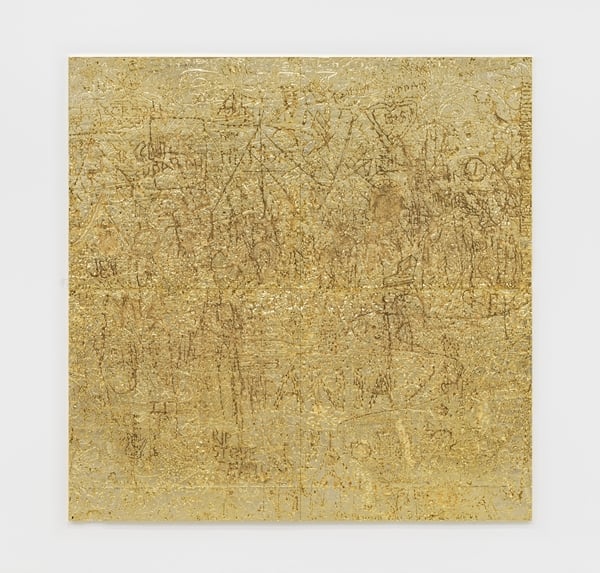
Rudolf Stingel, Untitled (2012).
Image: Courtesy of the artist and Gagosian Gallery © Alessandro Zambianchi.
3. Rudolf Stingel, Gagosian Hong Kong, March 12–May 6
Rudolf Stingel may not have enveloped every inch of Gagosian Gallery in glistening silver foil or vivid carpets, but this is nonetheless a ravishing show. The Italian-born artist debuts eight resplendent gold paintings culled from his environmental installations at the Museum of Contemporary Art Chicago and New York’s Whitney Museum of American Art. Through careful casting and plating techniques, he has retained the graffiti and incision marks inflicted by the viewers who first encountered the installations in 2007. Most impressive are the heroic works reaching nearly eight feet in height. (See his ranking in the artnet News report Which Top 50 Living Artists Performed Surprisingly Well at Auction in 2014?)
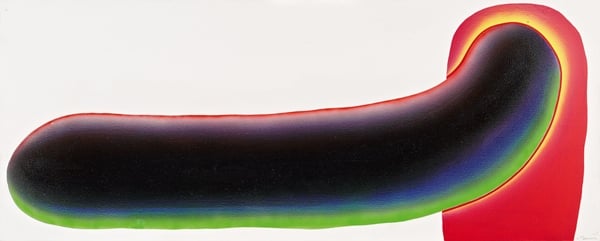
Sadamasa Motonaga, Untitled (1969), in “Avant Garde Asia: Gutai and Its Legacy.”
Image: Courtesy of Sotheby’s Hong Kong Gallery.
4. Avant Garde Asia: Gutai and Its Legacy and Avant Garde Asia: Lines of Korean Masters, Sotheby’s Hong Kong Gallery, March 13–27
This dual exhibition featuring more than 50 artworks explores the rise of abstraction in postwar Japan and Korea. At once radical and poetic, the show celebrates the fertile minds of artists who broke new ground in Asia during the 1950s and ’60s. Taking center stage will be wildly expressive oil paintings by Gutai artist Kazuo Shiraga (see Ben Davis On Why Kazuo Shiraga Was One of the World’s Most Radical Painters and Still Is and Art Market Analysis: Why Is Gutai Member Kazuo Shiraga’s Market Soaring?) and meditative canvases by Korean Mono-ha maestro Lee Ufan (see Lee Ufan Exhibition Storms Versailles). Not to be missed are stunning works by Tsuyoshi Maekawa, Atsuko Tanaka, Ha Chong Hyun (see Top Artists at Frieze Masters), and Park Seo-Bo (see Park Seo-Bo and Contemporary Korean Art) .
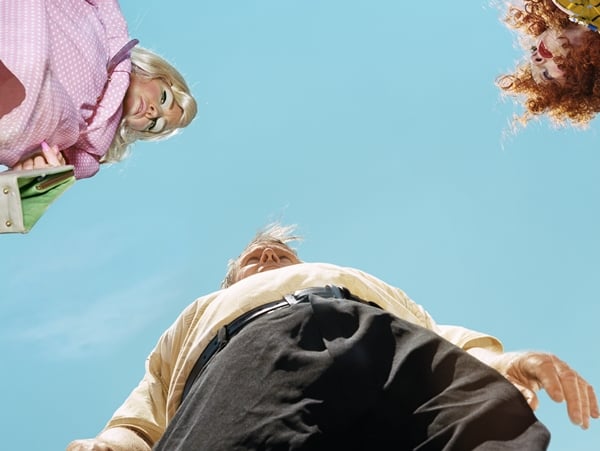
Alex Prager, Burbank (2014).
Image: Courtesy of the artist and Lehmann Maupin New York.
5. Alex Prager, Lehmann Maupin, March 12–May 16
It’s only fitting that Alex Prager’s first show in Hong Kong—one of the most densely populated cities in the world—consists of cinematic crowd scenes. Confronting her own agoraphobia, the Los Angeles–based photographer shoots from unnerving vantage points, thrusting viewers into claustrophobic yet compelling settings. She will take over Lehmann Maupin with large, hyper-saturated photographs and an engaging video piece featuring American actress Elizabeth Banks.
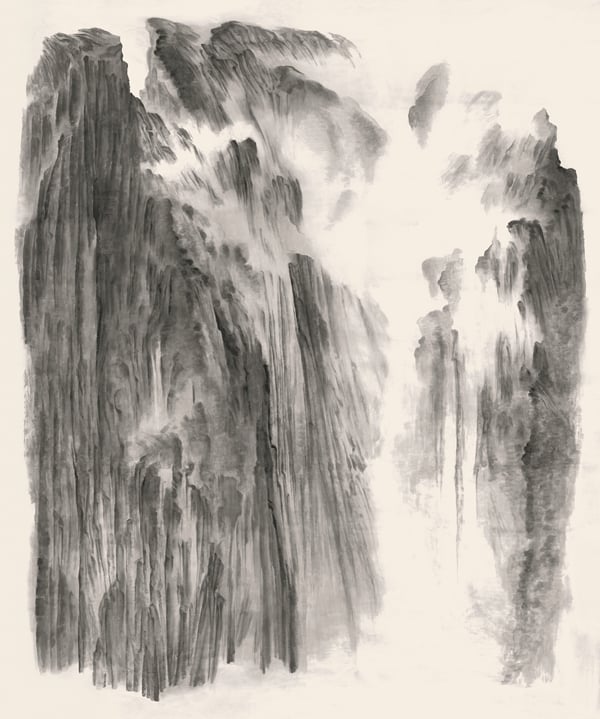
Xu Longsen, Beholding the Mountain with Awe No. 1 (2008–2009).
Image: Courtesy of the artist and Hanart TZ Gallery.
6. Xu Longsen, Hanart TZ Gallery, March 6–28
Step into Hanart TZ gallery this month and you will be dwarfed by Xu Longsen’s otherworldly ink paintings. Reinterpreting classical shanshui traditions, the Beijing-based artist works freely on a monumental scale creating ethereal landscapes. His fugitive brushstrokes hovering in empty space evoke mountains, mist, and dramatic cliff faces. Alongside his sprawling ceiling-to-floor scrolls is an impressive hanging of smaller framed studies. A breathtaking 10-meter landscape painting will also be on display in the Encounters section at Art Basel in Hong Kong.
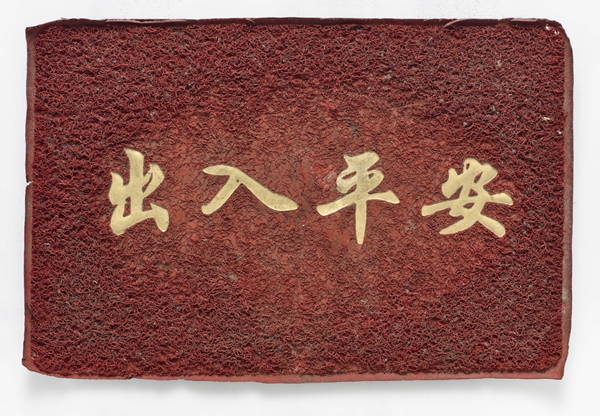
Gregor Hildebrandt, Weinbergsweg 27 10119 Berlin – rein raus Friede [Weinbergsweg 27 10119 Berlin – in out peace] (2015).
Image: Courtesy of Galerie Perrotin.
7. Gregor Hildebrandt: Coming by Hazard, Galerie Perrotin, March 12–April 25
Berlin-based artist Gregor Hildebrandt began cracking open cassettes and using strips of magnetic tape to make paintings in the ’90s. He’s since incorporated vinyl and videotapes into his practice. For his first solo show in the city, he covers Galerie Perrotin’s walls with curtains of an unspooled VHS recording of the Pierre Marivaux French romantic comedy Le Jeu de l’Amour, et du Hasard (which first premiered onstage in 1730). Set like windows within these glossy screens are textured paintings made of ripped tape. Most compelling is a fragmented photograph of the artist, Pietà-posed, visible through the spines of empty cassette boxes stacked in a cabinet.
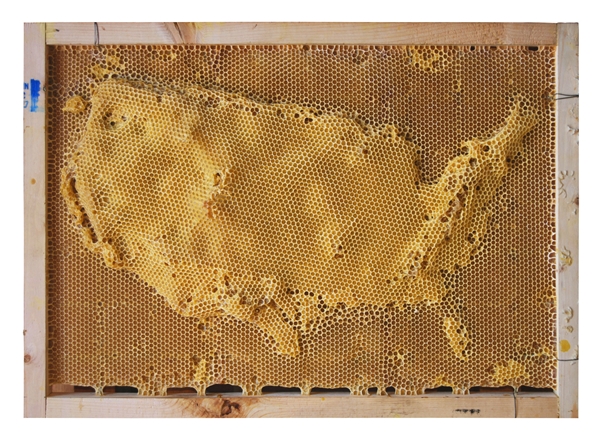
Ren Ri, “Yuansu Series I, Geometric Series I,”#03 United States of America (2007–2008).
Image: Courtesy of the artist and Pearl Lam Galleries.
8. Ren Ri, Pearl Lam Galleries SOHO, March 11–April 12
Pearl Lam inaugurates her second Hong Kong space with experimental beeswax sculptures by Ren Ri. The young Chinese artist has transformed the two-floor gallery into what looks like a science laboratory filled with acrylic vitrines housing intricate organic forms. After being stung by a bee as a child, Ren became fixated with the insects and spent years learning about their behavior (see Artist’s Honeycomb Sculptures Made by Bees Spark Buzz). The works on the ground floor are beehives that he overturned every seven days, yielding unexpected results. The second floor shows off honeycomb maps of various countries, topographically formed by bees.
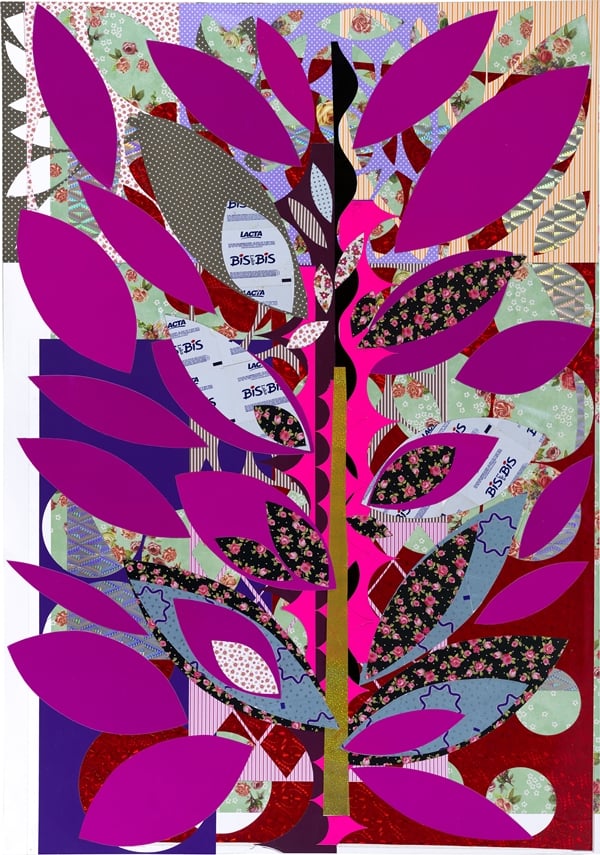
Beatriz Milhazes, Turkish Garden (2014).
Image: Motivo, courtesy of White Cube © Beatriz Milhazes.
9. Beatriz Milhazes, White Cube, March 13–May 30
Brazilian artist Beatriz Milhazes’s boisterous collages bring a taste of Rio de Janeiro to White Cube in Hong Kong. Inspired by her country’s lush flora, this show is teeming with vivacious colors and patterns. Her optically riveting landscapes and abstracted flowers are layered with paint, silk-screened paper cut-outs, and such found materials as sweets wrappers. The majority of the works are generous in size and invite investigation of her process-driven approach.
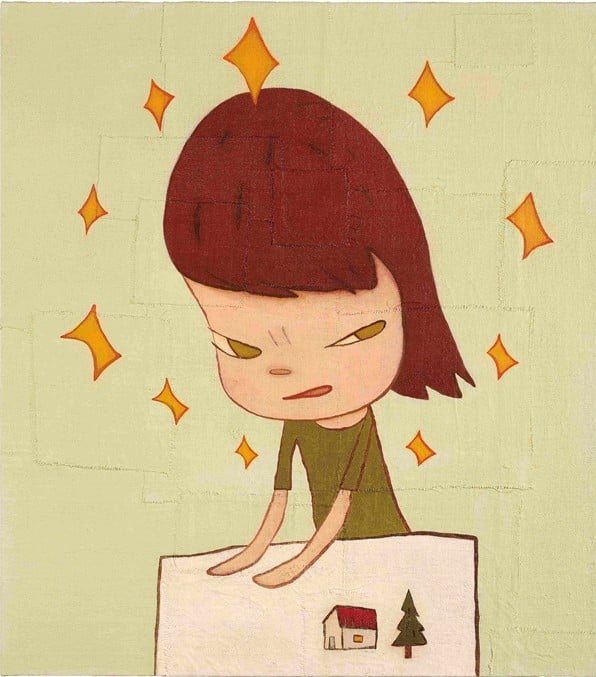
Yoshitomo Nara, Ten Stars (2014).
Image: Courtesy of Pace Hong Kong © Yoshitomo Nara.
10. Yoshitomo Nara: Stars, Pace Hong Kong, March 13–April 25
Coinciding with his solo show at Asia Society, Yoshitomo Nara unveils a new series of his kowai kawaii (creepy and cute) paintings at Pace Hong Kong. Viewers will be met with the latest cast of his sulky, saucer-eyed characters surrounded by four-point stars. Nara has applied flat blocks of paint to create large, child-like portraits on fragments of stitched jute. Despite faint traces of hope in some work, unsettlingly sinister undercurrents lurk throughout.















